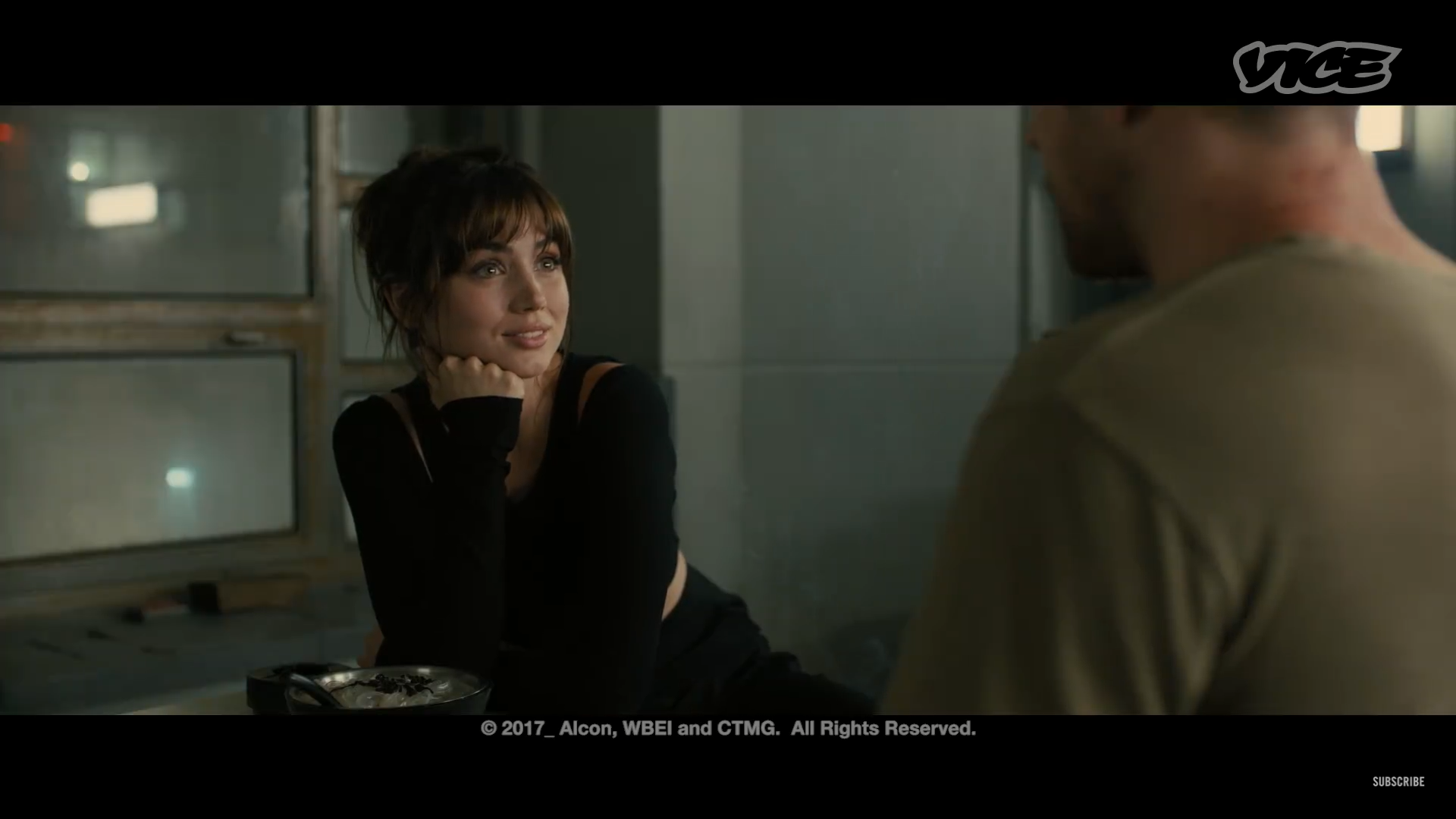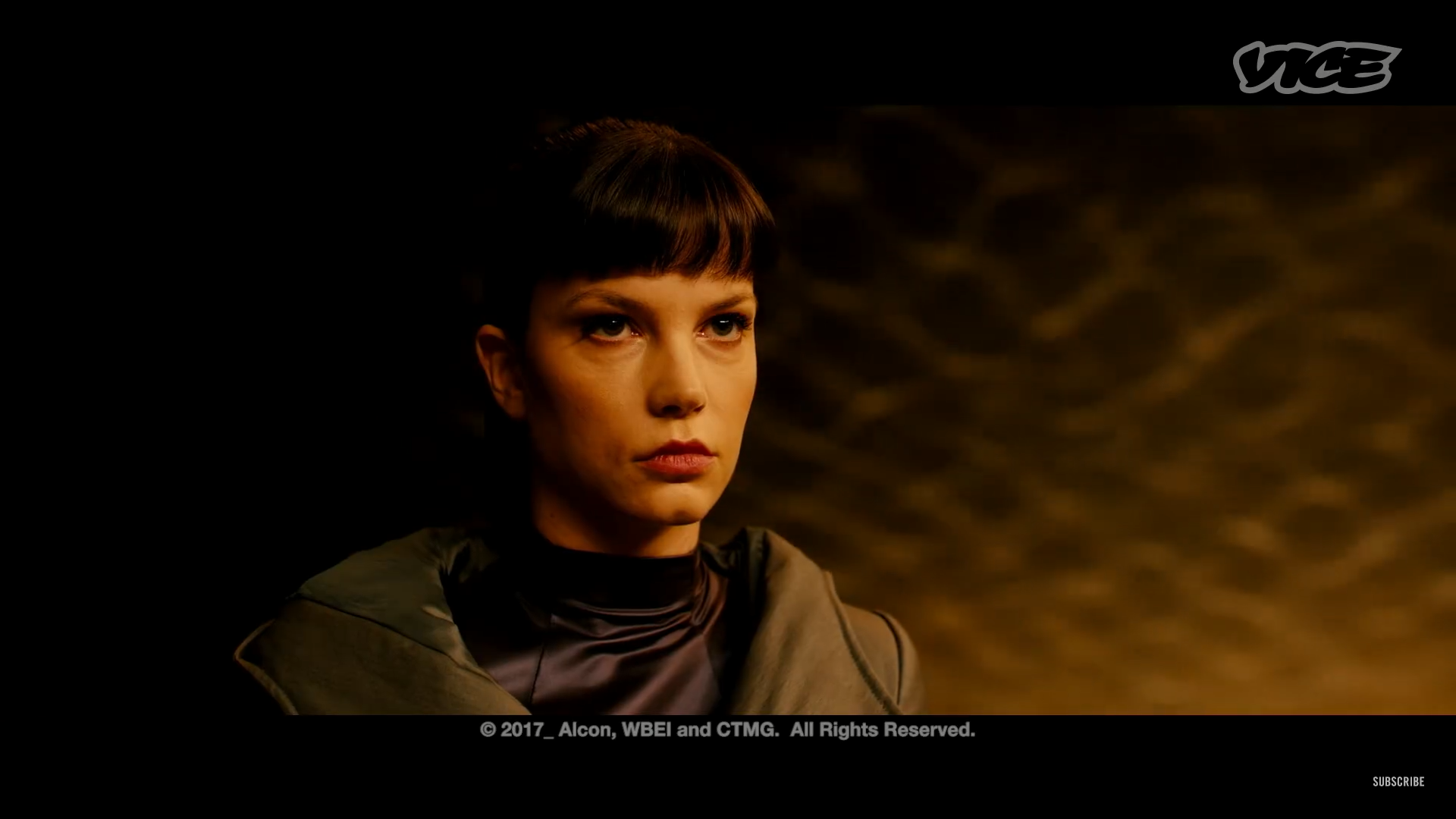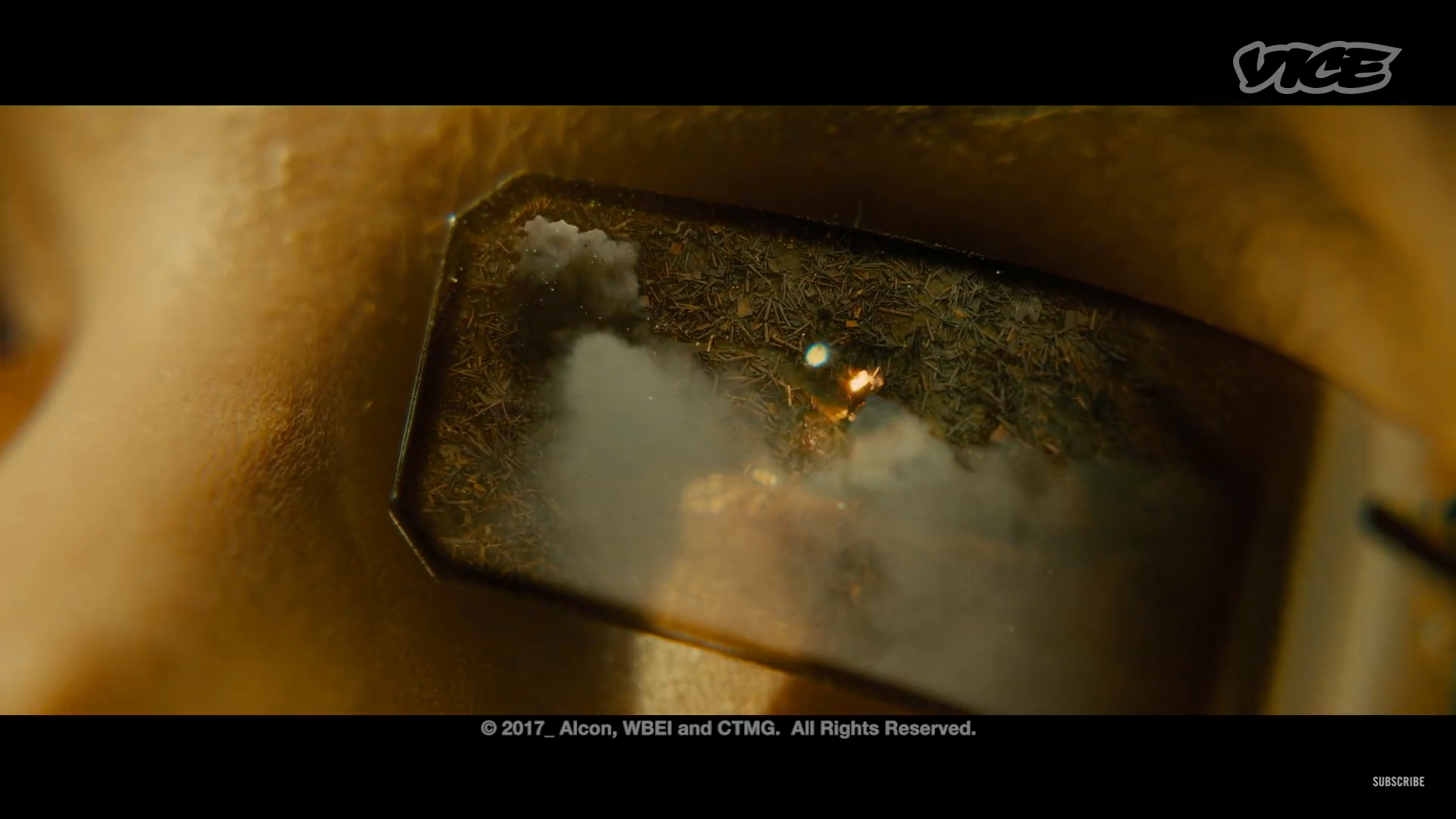Wow, first time reviewing a film that’s still in theaters! So as I bang this one out while the Vangelis Blade Runner (1982/2007) soundtrack plays in the background, please remember that this site does not give spoiler warnings—we just give spoilers.
I hesitated a while before deciding to write this, because for such a major cinematic event, Blade Runner 2049 (2017) is in many ways a letdown. Fortunately, much of the hard work of panning it has been done by The Economist‘s pseudonymous arts reviewer, Prospero. He is absolutely correct that the story, not to be too blunt about it, is shit. (Editor’s note: Noah Waldman majorly disagrees, and his case is well worth reading.) We aren’t invested in the action, and most of the story elements introduced in the first half are thrown away in the second. Shifting from content to form, we find that the pacing, too, is a demerit: At nearly three hours long with little to say, the film is almost entirely composed of slow, pseudo-ponderous shots, and as I was just telling my composition students yesterday, if everything is the same pace, nothing is emphasized.
So why are most reviewers losing their heads gushing over this film? Because everything aside from the above seems to work in its favor. First is the subversively appropriate casting of Ryan Gosling as Officer K. As I have noted repeatedly at this site, Gosling has lately forgotten how to act, or how to choose projects that require acting. So I can’t help feeling a sense of sweet, sweet irony in learning that both the filmmakers and Harrison Ford immediately thought of Gosling for the role of K, a replicant. Gosling isn’t a terrible actor; he just seems to have gotten stuck being typecast as the smooth, handsome, coolly macho man who’s secretly vulnerable inside, and he gives perhaps his best interpretation of that role in this film, when his inner demons almost literally bubble over and he explodes with emotion. It’s still a slight pity, though, that in a film about the blurry line between humans and “close but no cigar” replicants, a line whose blurriness is not just hinted at or symbolized (or the subject of fan speculation) but is a major point of what passes for the plot, K’s torrential inner conflict isn’t externalized with each ebb and flow, not even through early-Tom Cruise-style gestural acting (I say “early,” but he’s still got it at the end of the otherwise forgettable Jack Reacher: Never Go Back (2016)).
Fortunately, the casting just gets better from there. Dave Bautista does a tremendous amount with what little he’s given, proving that his performance in the underrated Marauders (2016) was no fluke. Harrison Ford, reprising his role as Rick Deckard, gives the performance of a lifetime, outshining everything else, even the spectacular visuals, with a single heartbreaking scene (and accidentally revealing that he was more or less phoning it in for Star Wars: The Force Awakens (2015). Can he please get his Oscar now?). Robin Wright basically recycles her effective performance from A Most Wanted Man (2014), but in the spectacular placidity of this visual environment, her “fuck”s (and those of Luv (Sylvia Hoeks)) carry as much sonic weight as the blade runner blaster. Jared Leto does his method thing again playing new corporate boss Niander Wallace, which saves him from having to actually dig into his character—good thing, too, because his character is thinner than the first few replicants in Blade Runner. But the two wonderful surprises were the leading and supporting actresses. (Also: How great is it that this film has as many significant female roles as male ones?)
Cuban actress Ana de Armas plays Joi, K’s virtual girlfriend. Simply put, she is the heart of the film, a source of, well, joy, stemming from her lack of a past and her program-mandated support of K no matter what. The character might seem sexist on paper, but man does de Armas act the shit out of it. The film plays a lot with her holographic existence, and the most visually moving scene is the build up to her off-screen sex scene with K, when she hires a prostitute and shows all of us viewers the unimagined potential of the surrogate sex scene in Her (2013). Assuming she does her hologram scenes without a physical acting partner in front of her, I predict on the basis of her serious acting chops that she’ll be much more of a household name in the near future. If Felicity Jones had a Latin accent and could act, she would be Ana de Armas.

(Obviously I can’t take screenshots; these stills are from a series of set interviews by Vice, to be found on YouTube.)
The lead actress and main villain, Luv, is played by Sylvia Hoek, and she has the deepest character and strongest screen presence of the entire film. Superficially, her role resembles the female terminator played by Kristanna Loken in Terminator 3: Rise of the Machines (2003), but something much, much richer is going on underneath the surface. (It doesn’t hurt that her heavy makeup makes her resemble the Rachel played by Sean Young, who (hint hint) has an acting credit in this film, too.)

She’s the main henchwoman, and at first she always has an expression of implacable serenity and a faint, professional smile. But her face soon crumples into fury when she has to really get down to business, punching and kicking people and crushing Robin Wright’s fist clenched around a shattered whisky glass. The silent tears on her once more implacable face at the moment of someone’s death betray a deeper truth, much as the tears in Get Out (2017) do. She doesn’t like killing or seeing death, per se—what she craves is Wallace’s praise, being called his “best angel.” This is the obvious point of the scene where, apparently defeating K, she triumphantly gloats, “I am the best!” I just wish she could’ve done it with a less corny line. I also wish that some similar outlet could’ve been given to K.
That’s all beside the point. The reason Blade Runner 2049 will be remembered, just like its predecessor, is for its visuals. My God, the visuals. This film is a goddamn cinematic spectacle. From the pregnant opening shot of a California covered in industrial-size solar panels, to the LA suffering maximum sprawl both horizontal and vertical, to the sublime transition from hypnotic ascending campfire embers to sideways rain, to the aforementioned holographic playfulness of Joi, this film is a feast for the eyes. For me, the beauty of the most beautiful scene can barely be described: K is surrounded by hostiles on the ground in the middle of the giant waste dump that is San Diego. He’s outnumbered, and more baddies are on the way. Suddenly, an explosion. More explosions, raining down from the sky. A clear shot of a rocket hitting some bad guys. Voiceover of a female voice saying, with utterly decadent nonchalance, “Fire. Fire. Fire again.” Cut to Luv, lying back on a chair in her office of yellow-lit minimalism with water-reflected light on the walls and ceiling. She’s having her nails done by someone wielding a pair of electric engravers while focusing on what looks like a single sunglass lens. “Twenty degrees to the east. Fire. Fire.” Close-up on the sunglass.

And it’s then we realize that she’s lazily saving K’s ass with some very expensive weaponry while having her fucking nails done. She ends the scene by urging K (who can’t hear her) to “Stand up, and do your fucking job.” Too bad the screenwriters didn’t heed their own advice.
(Editor’s note: I have no idea how it got onto YouTube already, but here’s the clip of the above. The inaccuracies in description, I’m sure, will be forgiven.)

5 thoughts on “A Thing of Beauty Is a Joy Forever? Blade Runner 2049 (2017)”